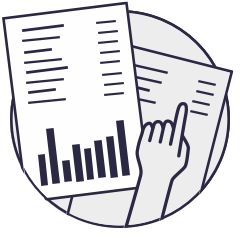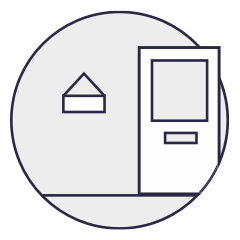Dividends
If you are operating your own business and it is a Limited Company, you will likely be very familiar with dividends. Dividends are payments made to the shareholders of a company from any profits left over after Corporation Tax has been paid.
If you are the shareholder of a Limited Company, it is very likely that dividends are the main way you take money back out from the company following your initial investment and owners often combine their salaries with dividend payments to give a desired annual ‘package’. Often this can be the most tax-efficient way of taking money from your entity – thereby ultimately benefitting your business.
The reason why dividends are so tax efficient is that you will not be required to pay personal National Insurance Contributions (NICs). Therefore, as a business owner, you are better off taking part of your salary as dividends rather than paying yourself a large salary. Of course, dividend income will still be subject to tax – as such, you are required to provide full details to HMRC in your annual Self-Assessment. Depending on how much you receive in dividends, combined with all of your other forms of income, HMRC will then calculate what tax bracket you fall under, and of course, how much you will need to pay.
Advantages of dividends
In addition to the benefit of reduced NI payments, there are other benefits that come with paying out dividends. One such advantage is that paying dividends to shareholders promotes and improves loyalty among them – one obvious off-shoot of this being that they are then much more likely to continue or increase their investment in your company. This can also help to keep share prices healthy and further promote your company as an attract business investment to prospective investors. Another benefit is that dividends – once paid – are a very visible and safe form of payment, both to shareholders and business owners. Whilst stock prices can, and often do, go up and down, a dividend, once paid, is final. Connected to this of course is the fact that such dividends can be used for further reinvestment – one obvious option being the money pumped straight back into that company.
Disadvantages of dividends
Of course, whilst there are benefits to dividends, there are also disadvantages. Paying dividends to your shareholders is great, the problem is that your shareholders can become used to such payments, and in the end, come to expect them. Whilst this is not a problem when things are going well, if your business suffers a setback and you are unable to continue to offer dividends of the same level you have been in the past, your shareholders may become disgruntled. This can obviously lead to shareholders looking elsewhere to invest their money; which has the very real possibility of making a bad situation even worse. A similar problem can arise for businesses that pay too high a portion of their profits as dividends. Doing this can lead problems with growth – as the lack of cash reserves can often slow down or even prevent a business from making the changes it needs to expand and grow. An additional problem associated with this is that such a lack of growth will very likely put off current shareholders and potential investors from investing in your company, again causing share values to fall.
How income and dividends affect tax
How much you earn in terms of salary, separate from any dividends that you receive on top of your salary, will ultimately affect how much tax you end up paying. To begin with, you will have to calculate your income, including salary, rental profits and any interest payments. Once you have done this, you should then add any additional profits you have received through dividends. To help you estimate what you can be expecting to pay, we have put together the following tables for three tax categories – Basic-Rate taxpayers, Higher-Rate taxpayers and Additional-Rate taxpayers.
Basic-Rate Taxpayers
| Tax Year 2018/19 | Tax Rate | |
| Personal Allowance | £11,850 | 0% |
| Tax-Free Allowance for Dividends | £2,000 | 0% |
| Basic-Rate Dividends (excluding personal allowance) | Basic rate dividends | Up to £28,500 per year |
If you fall within this bracket, you will pay 7.5% tax, after taking into account your Personal Allowance and Dividend Allowance. The maximum amount of tax you will pay in this group for 2018/19 currently stands at £2,437.50.
Higher-Rate Taxpayers
| Tax Year 2018/19 | Tax Rate | |
| Personal Allowance | £34,500* – £150,000 | 32.5% |
*excluding personal allowance
If you fall within this bracket, you will be required to pay tax of 32.5% on all your dividend income.
Additional-Rate Taxpayers
| Tax Year 2018/19 | Tax Rate | |
| Personal Allowance in England, Scotland and Wales | Over £150,000 | 38.1% |
Ways to lower taxes
As has been mentioned, as a business owner, you can reduce your tax slightly by giving yourself a lower salary and larger monthly payment in the form of dividends. Whilst the monetary benefits of doing so are not often massive, it can be a help to smaller-sized businesses. Whilst the process is perfectly legitimate, you must be careful to follow the guidelines for doing so set in place by HMRC. Business doing this are often monitored to check for wrongdoings, and the financial penalties for such infractions can be large. To make sure you are perfectly aware of what you are and not allowed to do, it is highly recommended that you consult with a qualified accountant, such as the team here at Quant, who will be able to advise you on the best path to take for your personal requirements and situation.





